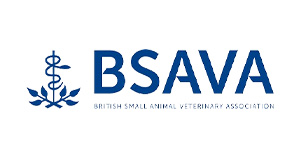Roundworm round-up – what have we seen this year, and how can we plan for the next?
Published: Dec 2024
This year has been an exceptional one for parasitic gastroenteritis (PGE) in our flocks at Shepton. Many have experienced overwhelming worm burdens in lambs (and ewes), resulting in heavily contaminated pasture, with faecal worm egg counts (FWECs) reaching the 10s of thousands in some cases. Combined with a surge in Haemonchus diagnoses, and emerging resistance to the main wormer classes, it paints an increasingly challenging picture for managing parasites in our sheep in future years.
With all this in mind, what can we do next year to prevent burdens getting so high, without relying on worming treatments?
Faecal egg counts
Starting FWECs early in the season (from four weeks after turnout/four weeks old) allows us to identify gut worm issues earlier, perhaps before the presence of clinical signs. This means we can get ahead of the problem, before the sheep are heavily infested and the pasture heavily polluted with infectious larvae.
We strongly recommend to also do a faecal worm egg count reduction test (FWECRT) to check your wormer has worked.
Grazing management
Managing our grazing is a crucial way we can reduce exposure of suscpetible lambs to worm larvae. Strategies are summarised below, but for an approach tailored to your system, please contact us.
Assign a risk level to your paddocks (see table) = this can be useful to make sure the highest risk stock (lambs) are given the lowest risk pasture for that time of year. Move lambs on to lower risk pasture, potentially around weaning, before the peak in pasture larvae in late summer.
- Graze animals on paddocks with reasonable sward length = 80% of parasite larvae exist in the first 5cm of grass, so much of the larval challenge can be avoided by not grazing paddocks short. Stock appropriately to reduce risk of overgrazing.
- Implement rotational grazing systems (RGS) = moving animals frequently can help prevent pasture burdens, as the animals have left the pasture before the eggs they have passed in the dung have hatched and become infectious larvae. ‘Mob’ grazing might be recommended, which involves moving stock more frequently when compared to RGS (every few days); this can be particularly useful on Haemonchus affected farms, as the pasture larval development can be very quick (as short as 3 days!).
- Avoid the dreaded lamb field = avoiding putting young lambs on fields used for similarly aged lambs last year, to reduce Nematodirus risk.
Protein intake
Sufficient dietary protein levels can reduce worm burdens in ewes and lambs (resistance) and improve growth rate performance (resilience) in lambs.
Increasing protein in the diet of pregnant ewes from 12% to 20% resulted in an 80% reduction in worm burden (right) in one study. Another study demonstrated supplementing ewes in the period around lambing produced a 20% increase in average DLWG in the lambs.
Supplementing lambs with a protein-rich supplement dramatically reduced worm burden and increase growth rates in an American study. The effect was most pronounced when lambs were grazed on poor quality establish pastures as opposed to newly sown pastures.
Bioactive forages
Plants such as chicory and birdfoot trefoil have been demonstrated to reduce worm burdens in grazing animals. It is thought that the condensed tannins in these plants affect worm development inside the animal, and the nutritional content of the forage improves immunity to gutworms. Studies have also shown that lambs infected with gutworms seek out tannin-containing plants more than their uninfected equivalents, suggesting they self medicate with tannins against parasites.
Trace element status
Studies have shown that lambs deficient in cobalt and selenium have increased FWECs (both) and increased stomach worm counts (selenium = ‘Selplex’, see right), compared to their supplemented equivalents. Blood tests can be done to determine if supplementation for any of the trace elements may be required in your flock.
In summary, there are a variety of methods we can use to reduce gutworm burdens in our sheep without the need for as frequent treatments with traditional wormers. Animal Health and Welfare
Pathway funding provides an excellent opportunity for a free vet visit to discuss the health of your flock – please contact us to see if you’re eligible!















